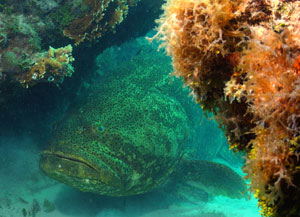 |
||||||||

SWFWMD Proposes Freeze Management Plan
When strawberry farmers turned on sprinklers to protect their crops from last winter’s record cold temperatures, they used so much water that the aquifer dropped 60 feet, causing 140 sinkholes and temporarily drying up 750 neighboring wells. Following a series of public workshops and technical work sessions, the Southwest Florida Water Management District has proposed a series of steps to prevent future problems.
Recommendations in the management plan include creating a water use caution area with new regulatory strategies to limit groundwater pumping and requiring deeper residential wells in the Dover/Plant City area. Communications initiatives also will be expanded to include automated phone calls to residents recommending that they turn off well pumps when aquifer levels are likely to drop.
The district’s FARMS — Facilitating Agricultural Resource Management Systems — program also will be expanded with additional funds available for projects that reduce groundwater pumping in the area. The proposed change makes projects that reduce frost/freeze demand from the Upper Floridan aquifer in the Dover/Plant City area eligible for cost-share funding of 75%, up from the current cap of 50%. Projects that reduce withdrawals of permitted quantities from the Upper Floridan aquifer by 50% or more can also qualify for the 75% cost share.
Games Highlight Challenges Faced by Sealife
 The National Oceanic and Atmospheric Administration (NOAA) has introduced a new game in its Waterlife series, “Sea Turtles and the Quest to Nest.” The online game gives kids the opportunity to be a sea turtle, beach goer, commercial fisherman, a legislator or even a whelk — the sea turtle’s favorite food.
The National Oceanic and Atmospheric Administration (NOAA) has introduced a new game in its Waterlife series, “Sea Turtles and the Quest to Nest.” The online game gives kids the opportunity to be a sea turtle, beach goer, commercial fisherman, a legislator or even a whelk — the sea turtle’s favorite food.
"The mini-games in 'Quest to Nest' help students understand the most important issues facing loggerhead sea turtles on land and in the ocean and give them practice making difficult decisions involving multiple stakeholders," said John Oliver, deputy assistant administrator of NOAA's Fisheries Service. "Helping our future leaders grasp the importance of conserving our marine resources is crucial to developing an informed citizenry prepared to take action to protect our nation's living marine resources."
The “Quest to Nest” joins a dozen other educational games available online at www.games.noaa.gov.
Shark Tagging with a Twist
Mote has been tagging animals for decades to learn more about them. Now, a new kind of tag developed by Microsoft helps visitors learn more about what they’re watching at the aquarium. The tags on select tanks can be read with a smartphone camera that will automatically open a web page, dial a phone number or display a text message.
“The aquarium is about experience — a place where families come to enjoy themselves, see fascinating creatures and learn,” said Dan Bebak, vice president. “The tags help create a richer experience for our visitors, even before they arrive at the aquarium.”
Visitors can scan the tags for tips about upcoming events, discounts, fun facts about our animals, new Mote videos and sneak peeks behind the scenes. “We can change the content on a moment’s notice, making them very dynamic,” Bebak says.
Smartphone users may download a free reader at www.GetTag.mobi.
New Tools Boost Understanding of Bay Nutrients
New tools developed by the US Geological Survey are helping bay managers evaluate the quality of water entering the Chesapeake Bay by balancing the impacts of seasonality and variations in river flow against changes caused by human activities like wastewater treatment and land use.
“This new method enables us to remove this source of variation from the data and get a much clearer picture of the effect of human activities, including nutrient-management actions,” said Robert Hirsch, USGS research hydrologist.
The analysis reveals both good and bad news about Chesapeake Bay. Looking at the four largest rivers in this study, the results show that since 2000 nitrogen has been decreasing in two rivers and nearly unchanged in two others. Phosphorus changed minimally in one river, decreased in another but showed measurable increases in two more.
Methods that do not consider variations in stream flow can paint a much different picture of long-term nutrient trends in the bay, Hirsch said. “This new method helps
s to see past these random year-to-year changes and get at the underlying long-term changes taking place.”
The USGS expects to expand use of the new tools to other estuaries where nutrients are an important issue.
Stakeholders Support Keys Sanctuary
 Stakeholder support for management strategies of the Florida Keys National Marine Sanctuary has grown dramatically among key user groups over a 10-year period.
Stakeholder support for management strategies of the Florida Keys National Marine Sanctuary has grown dramatically among key user groups over a 10-year period.
“Among commercial fishermen, dive operators and environmental group members, a majority or a plurality believe that the Florida Keys National Marine Sanctuary has benefited both the environment and community of the Florida Keys,” said Bob Leeworthy, chief economist for the NOAA Office of National Marine Sanctuaries.
The study revealed greater support for the sanctuary among the commercial fishing community, with a shift from highly negative responses to a supportive or neutral position. In the original baseline study, 78.4% of commercial fishermen were against the sanctuary’s creation. However, the 10-year replication survey found 42% were against the sanctuary, 41.7% supported it and 14.3% were neutral. Dive operators’ support for the sanctuary increased from 64% to 87%.
Established in 1990, Florida Keys National Marine Sanctuary protects 2,900 square nautical miles of important marine habitat, including maritime heritage resources, as well as coral reef, hard bottom, seagrass meadows, mangrove communities and sand flats with 18 distinct no-take zones.
The full study is available online at http://sanctuaries.noaa.gov/science/socioeconomic/floridakeys/kap.
Monarch Counts Down Nationally
 While data isn’t available on Tampa Bay butterfly populations, monarchs across the country experienced one of their worst years ever due to record low temperatures across the country, according to the National Wildlife Federation. Cold weather here last winter caused significant mortality although populations appear to be rebounding.
While data isn’t available on Tampa Bay butterfly populations, monarchs across the country experienced one of their worst years ever due to record low temperatures across the country, according to the National Wildlife Federation. Cold weather here last winter caused significant mortality although populations appear to be rebounding.
Like all butterflies, monarchs are dependent upon very specific plants as larval food for their caterpillars. Without sufficient numbers of these plants – which are often considered weeds – they cannot successfully reproduce. Milkweed, either native species or the tropical varieties, is easy to grow in landscape settings and will help maintain butterfly populations locally, notes Craig Huegel, author of “Butterfly Gardening with Florida’s Native Plants.”
Other plants that butterflies need as larval food include passionflower (gulf fritillary and longwing zebra caterpillars), Dutchman’s pipevine (pipevine and polydamas swallowtails) and senna (various species of sulfur butterfly caterpillars). Native species generally grow well through the winter months although they may freeze back to the ground if temperatures drop significantly below freezing.
